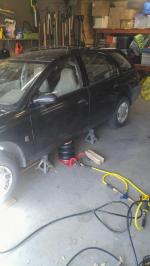Something like this came up on social media and I wont buy from them, so I searched Amazon and here it is,, pumps fast, of course it uses air,, as for coming down, seems a waste to have another gate valve, I just pop off the air line and use that valve to lower it, never touching it or the pull off valve,, I like it better than having to pump for sure

